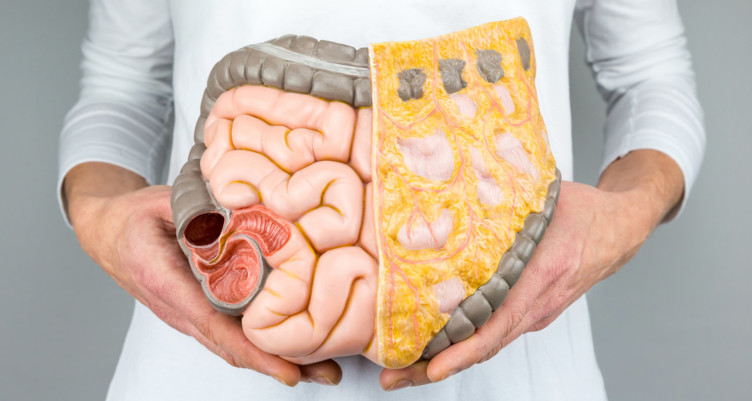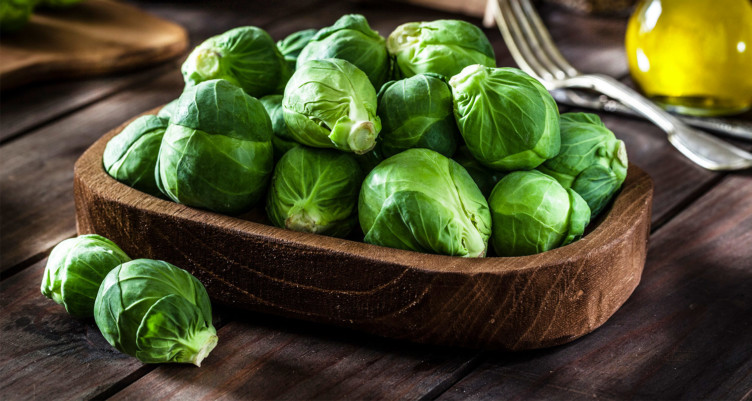Eating More Fiber Could Slow Brain Aging, Says New Study

- Research connects high-fiber diets with brain health.
- Previous studies indicate that dietary fiber can also strengthen your immune system, making you less vulnerable to disease, and even helping you deal with stress.
- For the best combination of dietary fiber and fatty acids, toss out the high-fiber cereal. Eat veggies, resistant starches, collagen, and grass-fed butter instead.
Want to improve your brain health and combat the effects of aging? Eat more fiber — and not just because it keeps you regular.
High-fiber veggies already have a lot of good things going for them. They’re packed with important minerals, vitamins, and antioxidants. Here’s another reason to load up your plate with leafy greens: A high-fiber diet may support brain health, according to one study. Less inflammation in the brain lowers your risk of neurodegenerative diseases like Alzheimer’s and Parkinson’s.
What is fiber?

Fiber is a type of carbohydrate that your body can’t break down. There are two types: soluble and insoluble fiber (more on that later).
Fiber is a big deal, and you want to make sure you’re eating enough of it. Dietary fiber intake among adults in the United States hovers around 15 grams per day on average.[1] That’s about half the recommended amount.
You can add more fiber to your diet with a supplement, but it’s best to eat high-fiber foods like zucchini, almonds, and broccoli. That way, you’ll reap all the benefits of added vitamins and minerals — and feed your good gut bacteria, too.
Keep reading to find out how that can benefit your brain health.
What the new study found

Previous studies have found that a drug form of butyrate — a short-chain fatty acid produced by gut bacteria — contributes to improved brain health in mice, including improved memory, associative learning abilities, and neural gene regulation.[2][3][4]
According to one study, a high-fiber diet may help with brain health — no drugs required.
Researchers fed young and older mice either a low-fiber or high-fiber diet for four weeks, then tested their blood butyrate levels. All of the mice on the high-fiber diet had significantly higher butyrate levels, better digestive health, and indicators of better brain health.
Here’s the kicker: The older mice were much more responsive to the effects of butyrate. The study’s authors note that aged animals are generally more responsive to the effects of butyrate. Plus, it’s possible that butyrate can counteract the way metabolism slows down with age.
Taken as a whole, the findings indicate that a high-fiber diet might be the golden ticket to support your brain health.
The other benefits of fiber
Fiber is fantastic for your brain, your gut, and your entire body. Here are just a few of its benefits:
- Strengthens immune system: In one study of influenza-infected mice, a high-fiber diet boosted antiviral immunity by activating T cells — specialized cells that help your immune system.[5]
- Promotes healthy sleep patterns: Stress can disrupt your gut bacteria. When you eat prebiotic foods like green vegetables, you feed your good bacteria, which can help with your sleep patterns after a stressful event.[6]
- Promotes “successful aging”: In one long-term study of older adults, dietary fiber made the biggest difference in supporting “successful aging.” The study defined “successful aging” as the absence of disability, cognitive impairment, respiratory symptoms, depressive symptoms, and chronic diseases.[7]
How to increase dietary fiber intake the Bulletproof way
You might associate fiber with whole-grain bread and high-fiber cereal. The problem is that grains may negatively affect the gut and spikes in your blood sugar. As for that high-fiber cereal? Check the ingredients list. Odds are, it’s loaded with sugars, gluten, and other undesirable ingredients.
There’s a better way to increase your fiber intake and fuel your body with feel-good nutrients: eat your vegetables and resistant starch.
Related: Fiber for Fat Burning and a Stronger Gut
Eat your veggies

Vegetables are powerful sources of soluble and insoluble fiber. Soluble fiber absorbs water and turns into gel during digestion, while insoluble fiber is the tough matter that bulks up your stool. For a full breakdown of vegetables that will power you up and satisfy your fiber needs, check out the Bulletproof Diet Roadmap.
- Sources of soluble fiber: Some of the best sources include broccoli, brussels sprouts, squash, and cabbage. If you’re on the Bulletproof Diet, sweet potatoes are a great carb with soluble fiber for your carb refeed days.
- Sources of insoluble fiber: Reach for kale, collard greens, celery, and green beans to hit your insoluble fiber needs.
Want to cover all your bases? Cabbage, broccoli, cauliflower, and brussels sprouts are excellent sources of both soluble and insoluble fiber — and they taste great with grass-fed butter or ghee.
Add resistant starch

Resistant starch can feed your gut by “resisting” digestion. Your body can’t break it down, which means the starch arrives in the colon intact. Your good gut bacteria enjoy a smorgasbord, creating butyrate — the short-chain fatty acid that supports gut health.[8]
Remember butyrate? Butyrate is important for a healthy gut and brain, and ingesting resistant starch helps your good gut bacteria thrive.
Resistant starch can be found in raw potato starch, raw green bananas, and raw plantain flour. Some people are sensitive to resistant starch, and they might experience bloating and gas. If that’s the case, there are other ways to get more butyrate in your diet.
Eat more butyrate

You can supplement your diet with more butyrate by eating grass-fed butter, which is why it’s such an essential part of the Bulletproof Diet. You can also eat more collagen protein, either from your food (think: bone broth and gelatin) or collagen supplements (also known as collagen peptides).
“Consuming collagen balances your amino acid ratios, and gut bacteria can turn collagen into butyric acid, which is very good for your gut,” Dave Asprey, founder of Bulletproof, says in “The Bulletproof Diet.”
Fiber is more than just another part of your diet. It’s a vital ingredient to support your body as you age, and help you feel like you’re on top of the world.
So, load up your plate with vegetables and a pat of grass-fed butter. You (and your gut bacteria) deserve it.
Sign up for early access to sales, product launches, the latest Bulletproof news and more!



